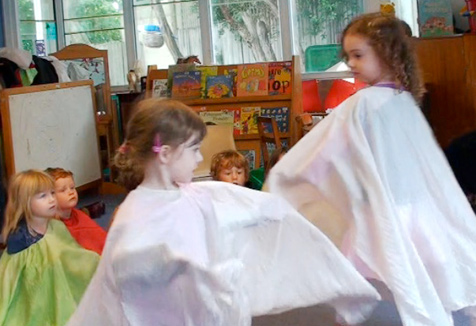Some good can grow from the ashes: Using the bushfires as a learning opportunity for young children

The story of Croaka Loka was adapted to educate young children about bushfires
An expert in early childhood education at the University of Western Sydney says the devastation caused by the bushfires could be used as an opportunity to teach young people about nature.
Dr Kumara Ward, a lecturer from the School of Education at UWS, completed a PhD in 2010 entitled The Living Curriculum: A Natural Wonder – which explored the use of creative arts and music as a learning tool in the early childhood sector.
During monthly research visits to four early childhood centres throughout 2009, Dr Ward observed the children's concern about the Black Saturday Bushfires and developed creative experiences and stories to help the children understand the disaster, particularly where there were fires in their local area.
"I was due to visit a preschool in the week following Black Saturday and the teacher educator mentioned on the phone that the children were concerned and curious about where the animals had gone and what they would do," says Dr Ward.
"Using a story about Croaka Loka, a green tree frog who needed to find a body of water in which to shelter from the fires, it was possible to sensitively address the children's concerns during the lesson and discuss what animals do when a fire is coming and how they might manage in a burnt-out habitat."

Children participating in a movement and dance session
Croaka Loka's story was accompanied by a new song written for the lesson by Dr Ward and the children were encouraged to join a movement and dance session where, using lightweight coloured silk veils, they could move the wind and fire. They were also engaged in dramatising the animals emerging in the morning mist after the fires and the gradual renewal of growth in the forest.
After the movement session, the children were invited to assist in creating the scene of Croaka Loka's new pond on the playroom floor with large pieces of cloth and a variety of seedpods, shells, bark, twigs and small rocks.
Through surveys with early childhood educators and observations of children's behaviours during visits to preschools, Dr Ward found that the arts can successfully contribute to children's developing connection with their local natural environments.
"The arts are an effective vehicle through which children can be provided with opportunities to understand and identify with the lifecycles, habitats, interrelationships, form, colour, patterns and wisdom of the natural world," says Dr Ward.
"From the very first research visit when educators started using the arts to explore and represent the natural world, the children in all of the preschools showed concern for the natural world and expressed concepts of care or nurture.
"The January 2013 bushfires are a force of nature that is happening now and they will be part of the children's consciousness. While they represent hardship and tragedy for some, they also represent opportunities to engage in discussions, stories and creative experiences about the natural world that highlight its power, diversity and capacity for renewal."
Ends
22 January 2013
Photos: Kumara Ward
Mobile options:



